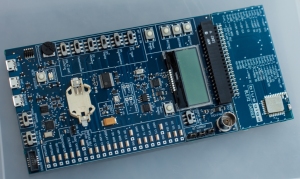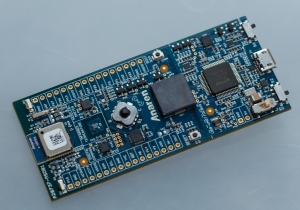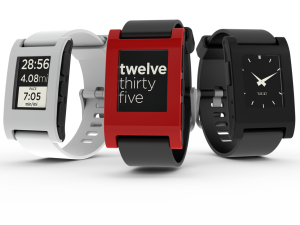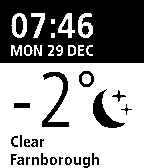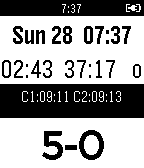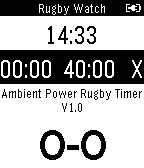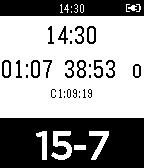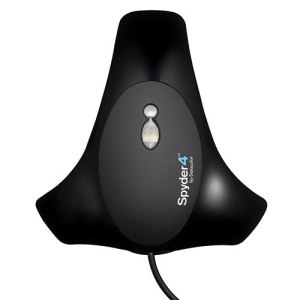Ukulele Events, a spin-off from Omega Music, the online retailer who I buy most of my ukuleles from, organised a weekend – a ‘mini festival’ if you like – at the Gilsland Spa Hotel in Cumbria. Over two nights and one whole day, there were a huge range of delights to satisfy any ukulele enthusiast.
Being some 339 miles away, I set off at 08:37 and arrived just after 14:00, quite a long haul, but I was there bright and early. Omega has set up a shop in one of the rooms, and prior to this weekend, I had arranged with Matt Warnes of Omega to look at a Ohana Electro Tenor, or a Kala Archtop Electro Tenor. I had decided I would have one, probably the Ohana, the cheaper of the two, but probably the more sensible choice.
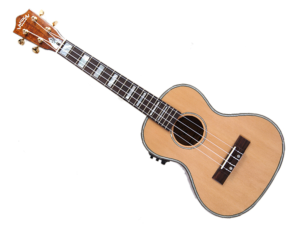
The Lanakai LK-TEU
However, on looking around, I spotted the Lanikai LK-TEU (at more than the price of both those other ukes combined, I might add), but with a Fishman pickup system and beautiful mother of pearl inlays in the fretboard. Everything covered on looks and sound. So, a couple of hours in, and I’d made my purchase!
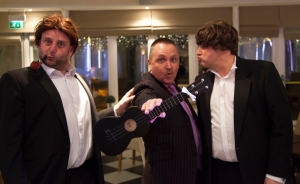
Feckless & Fuddle with yours truly
First event of the weekend was a concert, hosted by Feckless & Fuddle, the mop-haired buffoons (look them up). Why Matt and his colleague, Andy Webster book these two fools is beyond me! First up was Zoë Bestel, a singer-songwriter with the most incredible voice. For me, although all the acts were excellent, she was the standout act of the weekend. She must be an undiscovered talent, she has so much of what you want in a musician in the one package. She has stage presence, an endearing, humble personality with no air of superiority at all. But, her vocals are perfect, dynamic with the most control I have ever heard. She writes deep and tuneful songs, sings covers with her own unique spin. I can compare her with the voice of Bjork (but without the oddness), the attitude of Pink and Lily Allen, and the raw talent of Ed Sheeran (but a different style clearly) – but all in one! How she remains undiscovered, I don’t know. She clearly outshines anyone on “The Voice” for example.
Then, we had Mike Hind, who is at pains to point out he has a British Passport, hailing from Bermuda. Mike is a true entertainer. A fantastic and wide ranging voice, he has a comic talent. His version of “Wonderful Tonight” is sarcastic, ironic, rude, but very, very funny. He’s on a UK tour at the moment, coming to our very own UnplugTheWood 5th birthday party in a week’s time.
Then we had Dead Man’s Uke, Tim and Jake are well known in the UK ukulele scene, with Jake on his five stringed double bass (surely that makes it a double and a half), and Tim mostly with a resonator uke. Lots of humour again, swing and jazz style going on.
Then, an open mic session, with 160 people at the event, I wasn’t going to go up first, and I was going to do something I was confident in delivering well. So, being fourth, I did Mike Krabbers’ “Songs Of Praise”. As a tribute to Zoë, who I was so impressed with and had explained that one of the most popular names for her new uke that had been suggested was the rather odd (for a ukulele) “Frank”, I explained that I would name my new Lanikai “Frank” in her honour. Anyhow, it all went pretty well, I got some laughs and a loud, maybe polite, cheer at the end.
Late to bed, about 2am…
Saturday morning and a hearty breakfast at the hotel, picked up a copy of Omega’s new ukulele magazine and the first workshop of the day was at 10:30am. Phil Doleman explained how to make chords and rhythms sound different, allowing for some stylish arrangements. For me, practical help that will help with multi-tracking audio and songs.

Ben Rouse
A short break, then Ben “Uke” Rouse, who by coincidence, I had exchanged emails with back in 2013 after an event I photographed on HMS Warrior in Portsmouth. He explained how to warm up, and getting control of fingers. Essential for moving around the fretboard, lots of exercises. I might get a fretboard to bolt onto my car’s steering wheel to get practice in… His signature wave (which could be misunderstood) became the meme for the weekend!
The Mersey Belles followed with a vocal workshop, teaching everyone how to warm up vocally and harmonise successfully. One particular song that had been troubling me was fixed with a short discussion with Pearl, one of the Belles, who explained that for me a change of key would be a simple fix, when I thought it was a breathing problem, A run through with her, and problem solved!
I had cheekily asked Zoë earlier if she would duet with me on the open mic later (I was nervous that she would not lower herself to perform with a duffer like me, but she’s too nice to say no!), this change of key would come in handy.
Then a mass sing and strum with Andy Websters’ group “Ukes Akimbo”. A song book had been sent around beforehand, and Andy led everything extremely well. He’s a natural showman (and slightly mad, which helps).
A couple of hours gap, before a very hearty gala dinner, with huge slabs of roast beef provided on each table, for everyone to carve. It does seem to me that the further North you travel, the better the beef gets and the three and a half degrees I had travelled north made many degrees of difference. Fabulous!
Tonight’s concert started with Ben Rouse, one of the most energetic ukulele players you will see. His interpretations of Led Zeppelin classics and others have to be heard (and seen) to be believed.
Phil Doleman followed, his take on 20s and 30s music (up to 1939, when he said “music finished”), being an insight into some great rhythm and lyrics that we don’t get to hear so much now.

The Mersey Belles
The Mersey Belles followed Phil, taking us back again with their lovely harmonies and vintage sound, adding a spin to old songs and some modern classics from Beyonce and the like too.
Another open mic, and the real highlight of my week, I got to perform my open mic with Zoë supporting me on vocals. Zoë Bestell was my backing singer. Did I just say that? A real memory!

Click to view video – All About The Bass
One of my favourites, Meghan Trainor’s “All About The Bass” is also one of Zoë’s, so it worked really well. She outshone me of course, and it would have been better if I’d left the stage, but everyone in the ukulele world are so generous, encouraging and just plain nice, that I know she was happy to humour me. I gave a nod to the Mersey Belles for my key change help, and they were very obviously pleased to have made a difference. I’m so grateful and honoured.
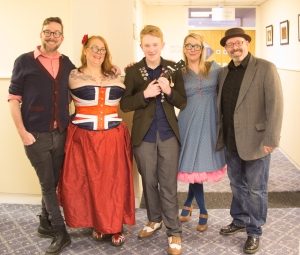
Mike Hind, Clarice Wokes, Michael Adcock, Nancy from the Mersey Belles & Phil Doleman
Which brings me to the major point. Music is a great leveller. No one strives to prove themselves over someone else. Everyone appreciates the effort people put in, and the fact that everyone has “been there”, learning, sometimes struggling, and enjoying the journey. It takes some longer than others, but even the best and most proficient are, in my experience, happy to explain, and genuinely pleased when they see the fruits of their explanation.
Omega Music are no exception, they may be a commercial organisation, but they clearly enjoy what they do. For me, two big things have got me this far. Mike & Caroline at UnplugTheWood, who encourage me and help me along, not least with their weekly music jams. Omega Music, whose help has admittedly fuelled my ukulele purchases, but they have provided a platform via social media for advice and encouragement. Matt’s also advised me, even telling me to buy a cheaper, better uke than one I had in mind.
Everyone in the ukulele world is so encouraging. Above all, we all just have fun.
 The Greek population have voted to reject austerity. Not that it really makes any difference to the outcome.
The Greek population have voted to reject austerity. Not that it really makes any difference to the outcome.


 Posted by simontaylor
Posted by simontaylor 






